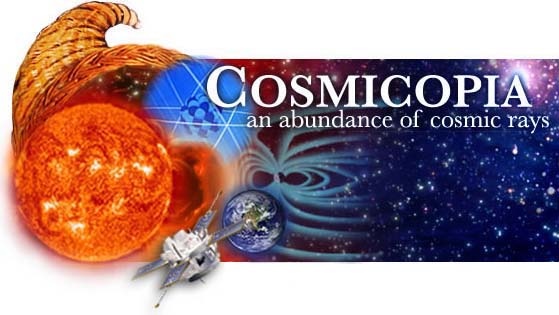
The History of Cosmic Ray Studies
1970 - 1979
- 1972
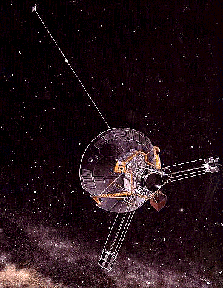 Pioneer 10 launched - USA Jupiter Flyby - flew by Jupiter on December 1, 1973. Its greatest achievement was the data collected on Jupiter's magnetic field, trapped charged particles, and solar wind interactions.
Pioneer 10 launched - USA Jupiter Flyby - flew by Jupiter on December 1, 1973. Its greatest achievement was the data collected on Jupiter's magnetic field, trapped charged particles, and solar wind interactions.- 1972
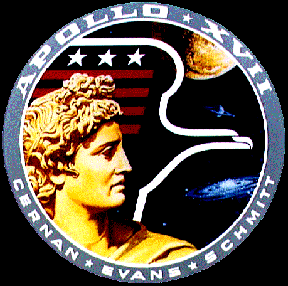 Apollo 17 carried a lunar surface cosmic ray experiment that measured the flux of solar wind particles and low energy particles in space, both solar and galactic, during quiet Sun conditions. Foil detectors were hung from the lunar module and were brought back to Earth for analysis of the particle tracks. With this mission, man left the moon for the last time - NASA was forced to abandon future missions due to finances.
Apollo 17 carried a lunar surface cosmic ray experiment that measured the flux of solar wind particles and low energy particles in space, both solar and galactic, during quiet Sun conditions. Foil detectors were hung from the lunar module and were brought back to Earth for analysis of the particle tracks. With this mission, man left the moon for the last time - NASA was forced to abandon future missions due to finances.- 1973
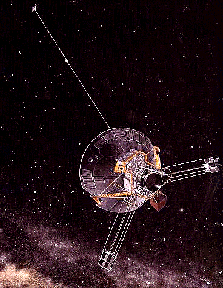 Pioneer 11 launched - USA Jupiter/Saturn Flyby - flew by Jupiter on December 1, 1974. It measured Jupiter's intense charged particle and magnetic field environment.
Pioneer 11 launched - USA Jupiter/Saturn Flyby - flew by Jupiter on December 1, 1974. It measured Jupiter's intense charged particle and magnetic field environment.- 1973
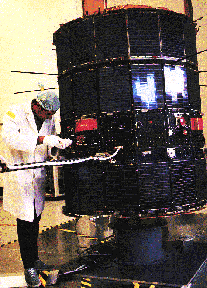 IMP-8 was launched on a Delta rocket by NASA to measure magnetic fields, plasmas, and energetic charged particles (e.g. cosmic rays) of the Earth's magnetotail and magnetosheath and of the near-Earth solar wind. IMP-8 continues to operate to this day in its near-circular, 12-day orbit. Its orbit is half the distance to the moon. It continues to accumulate a long-time series database useful in understanding long-term solar processes.
IMP-8 was launched on a Delta rocket by NASA to measure magnetic fields, plasmas, and energetic charged particles (e.g. cosmic rays) of the Earth's magnetotail and magnetosheath and of the near-Earth solar wind. IMP-8 continues to operate to this day in its near-circular, 12-day orbit. Its orbit is half the distance to the moon. It continues to accumulate a long-time series database useful in understanding long-term solar processes.More about the IMP-8 spacecraft...
- 1973 - 74
- The sources of the fast streams in the Sun seen by Mariner 2 in 1962 were found to be coronal holes studied from the space station Skylab. In sunspot regions, magnetic field lines form arches that hold back the solar wind, but in the "holes" in between, the field lines extend outward and allow the plasma to escape freely. Lower-speed solar wind comes from areas in between sunspot regions and coronal holes.
- 1975
 GOES (Geostationary Orbiting Environmental Satellite) began to monitor the Sun's surface for outbursts and therefore warn us. This early warning can give us on Earth a few hours to prepare for potentially harmful effects.
GOES (Geostationary Orbiting Environmental Satellite) began to monitor the Sun's surface for outbursts and therefore warn us. This early warning can give us on Earth a few hours to prepare for potentially harmful effects.- 1977
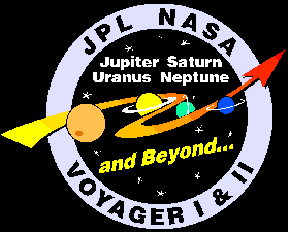 The Voyager 1 and 2 spacecraft, both
launched in 1977, embarked on an interstellar mission that, between
the two of them, explored all the giant outer planets, 48 of their moons,
and the rings and magnetic fields of those planets. Voyager 2 provided
evidence it was nearing the edge of the heliosphere in 2003.
The Voyager 1 and 2 spacecraft, both
launched in 1977, embarked on an interstellar mission that, between
the two of them, explored all the giant outer planets, 48 of their moons,
and the rings and magnetic fields of those planets. Voyager 2 provided
evidence it was nearing the edge of the heliosphere in 2003.More about the Voyager spacecraft...
- 1978
 ISEE-3 was launched. The ISEE (International Sun-Earth Explorer) program was an international cooperative program between NASA and the European Space Agency (ESA) to study the interaction of the solar wind with Earth's magnetosphere. ISEE-3 was moved from its orbit and made transits through Earth's geomagnetic tail from September 1982 until December 22, 1983, when it began its cometary mission, to study the Giacobini-Zinner comet. At that time, it was renamed ICE, the International Cometary Explorer.
ISEE-3 was launched. The ISEE (International Sun-Earth Explorer) program was an international cooperative program between NASA and the European Space Agency (ESA) to study the interaction of the solar wind with Earth's magnetosphere. ISEE-3 was moved from its orbit and made transits through Earth's geomagnetic tail from September 1982 until December 22, 1983, when it began its cometary mission, to study the Giacobini-Zinner comet. At that time, it was renamed ICE, the International Cometary Explorer.
Back to main history page
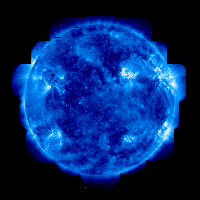

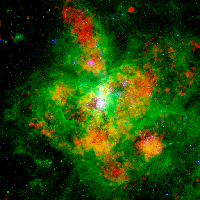
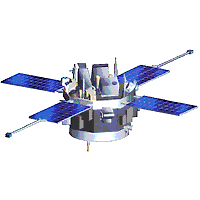
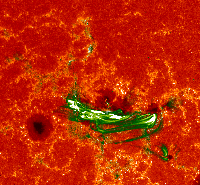
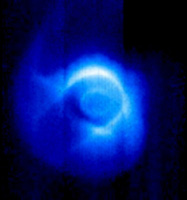
Click on images above to
learn more about them
A service of the Heliophysics
Science Division at NASA's GSFC
Questions and comments to: cosmicopia@cosmicra.gsfc.nasa.gov
Curator: Dr Eric R. Christian, NASA
Responsible NASA Official: Dr Eric R. Christian
Privacy Policy and Important Notices
Questions and comments to: cosmicopia@cosmicra.gsfc.nasa.gov
Curator: Dr Eric R. Christian, NASA
Responsible NASA Official: Dr Eric R. Christian
Privacy Policy and Important Notices

HOME
In the News
History
Ask Us
Great Links
Glossary
Site Map
Search NASA